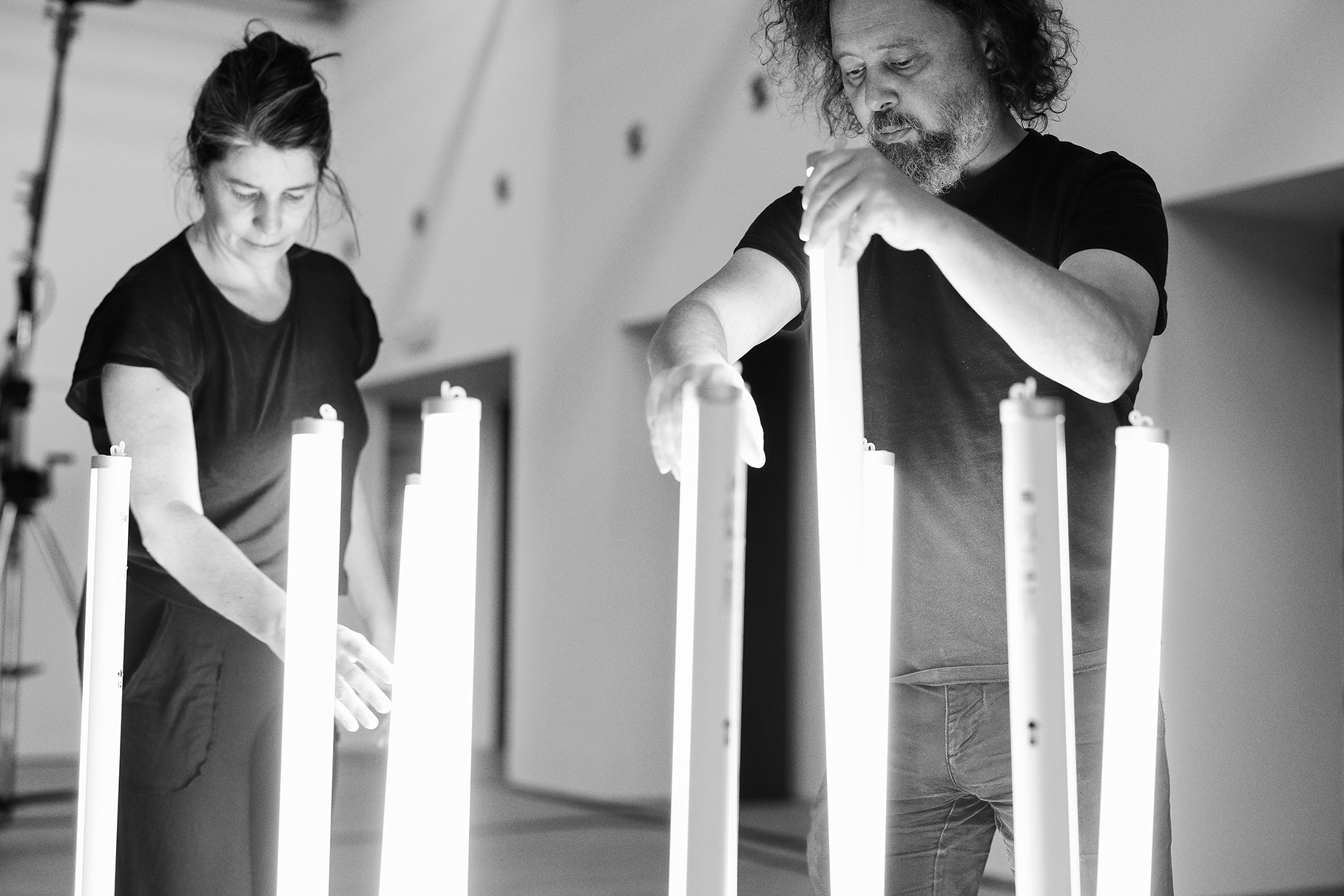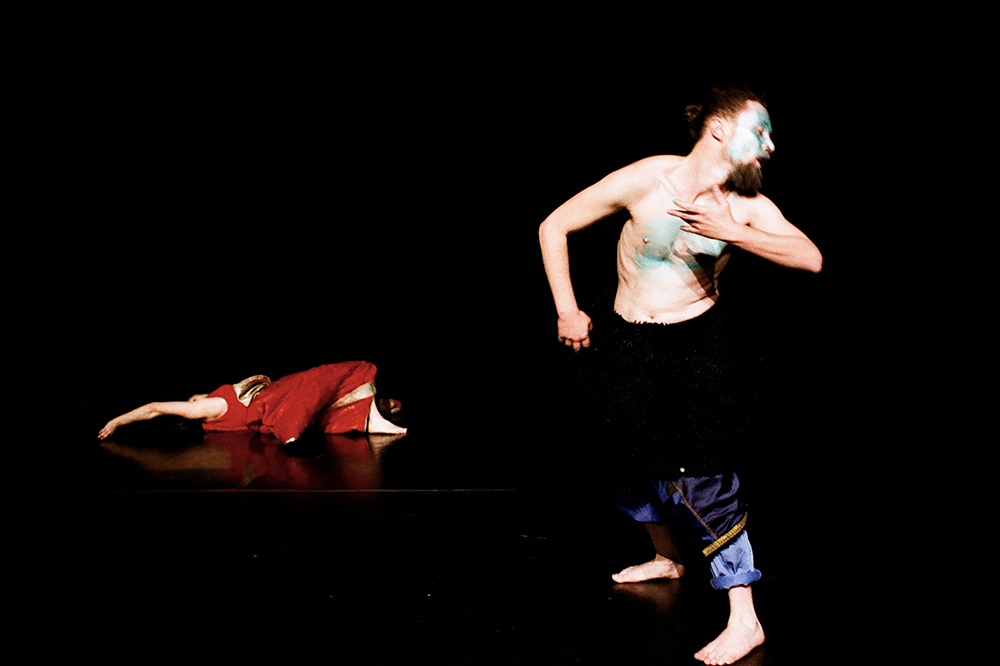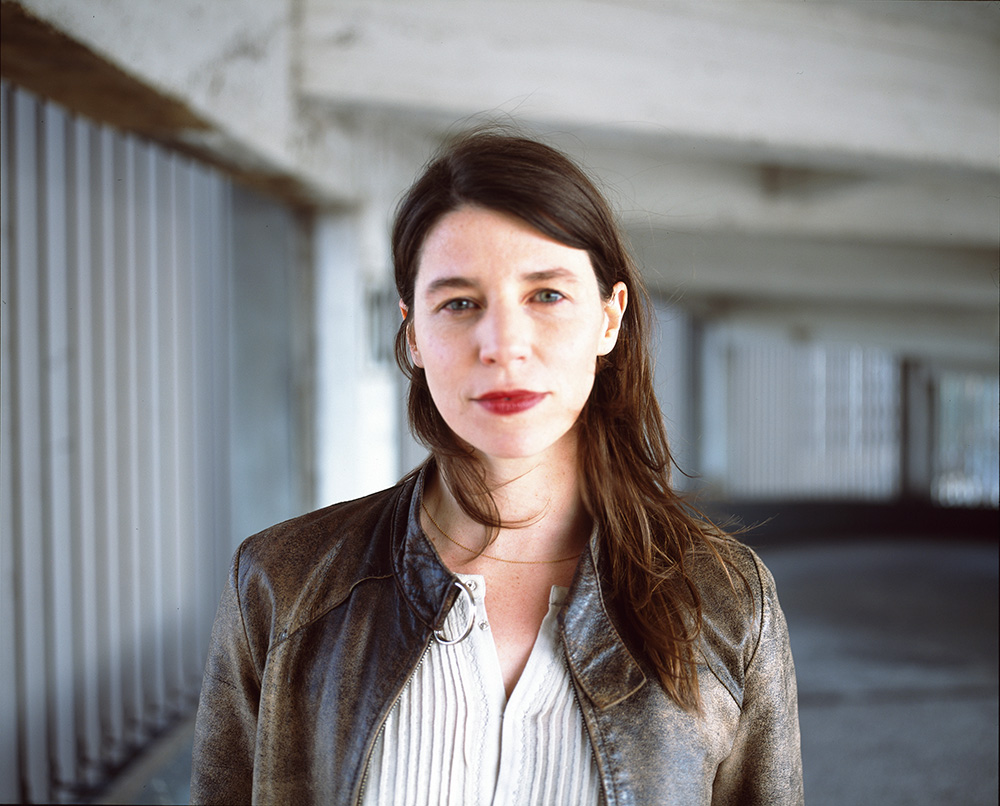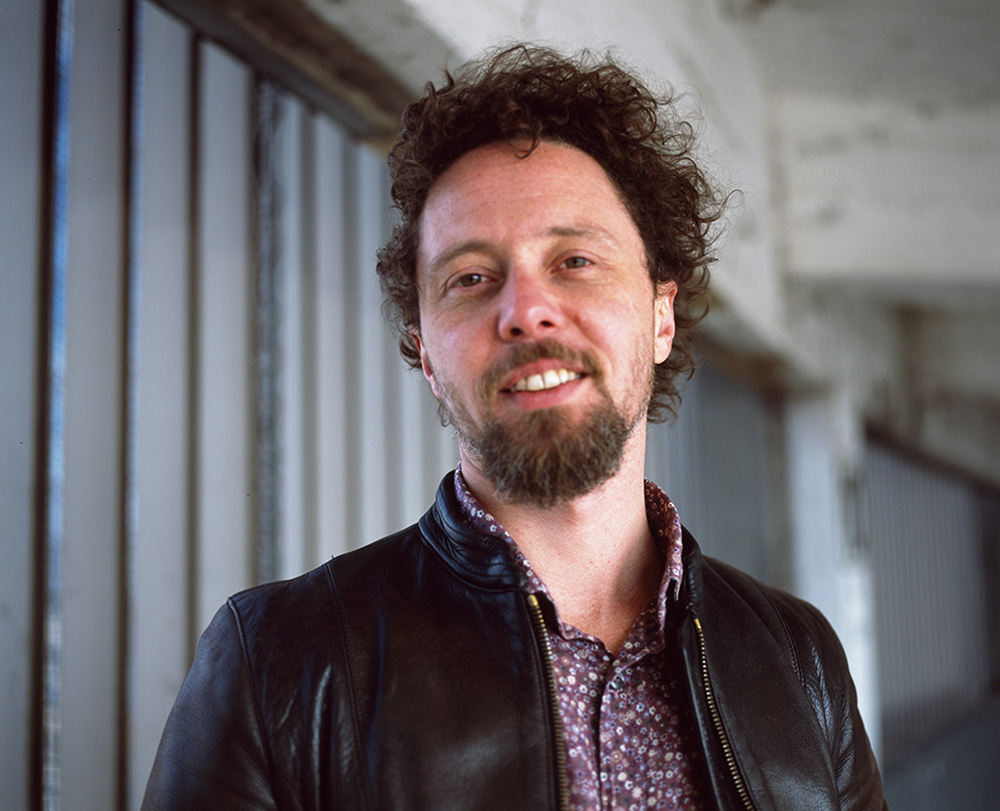Claire Croizé and Etienne Guilloteau met at P.A.R.T.S. and have worked together closely ever since.

© Koen Broos
Like many young choreographers, they settled in Brussels. After their studies they were both supported by WP Zimmer in Antwerp and first collaborated in 2007 for the video installation/performance Dido. In 2008, they founded the structure Action Scénique together with performance artist Nada Gambier. During the next eight years, Claire and Etienne would continue to intensify their collaboration. Together with Alain Franco they created Mouvement pour quatuor (2012), a performance for eight dancers with live music by Quatuor MP4. Claire danced in several of Etienne’s choreographies, such as Skènè (2004), Tres Scripturae (2010) and Synopsis of a Battle (2013), and has most recently assisted him with Zeit-Bild (2015), Feu (2015) and The Diamond Sea (2016), while Etienne assisted Claire with the dramaturgy of a.o. The Farewell (2009), Vor deinem Thron (2010), Chant éloigné (2012), Primitive (2014) and EVOL (2016).
In 2016 Claire Croizé and Etienne Guilloteau continue their close professional relationship under the name ECCE. In this new constellation, they work as two individual choreographers with their own artistic language, but from a shared philosophy and a shared expertise. Often, their work can be situated on the intersection between dance and music, especially live music, which plays a prominent role in their choreography. They have collaborated with several national and international music ensembles and venues (B’Rock, Oxalys, MP4, Zwerm, The Stiftung Mozarteum Salzburg, oenm etc.). Etienne has, moreover, developed a close collaboration with pianist and musical director Alain Franco. With ECCE, Claire and Etienne continue to explore the relationship between (live) music and dance as house artists of Concertgebouw Brugge for the period 2017-2021.
ECCE stands for Etienne and Claire, Claire and Etienne. As artists, their work reflects themselves and their environment, but in their collaboration, they reflect and complement each other as well.

© Herman Sorgeloos
They function as a cohesive unit with opposite but complementary ways of working: while Etienne first has an intellectual approach and only then a physical approach, starting from texts or philosophy and focusing initially on the structure and dramaturgy of the piece, Claire starts from her intuitive understanding of the body. “Ecce” literally means “Behold”, “Watch”. Watching as the basic act of a performance, which exists by grace of the spectator. The choreographer who is holding the moving body up for the spectator to behold, but at the same time presenting a concrete physical individual who is able to be watched and return this gaze, interacting with the audience. The word ECCE also refers to “Ecce Homo”, an important figure from the Christian liturgy, but more importantly it refers to the title of Nietzsche’s posthumously published autobiography. As the famous philosopher looks back at himself in this book and critically analyzes his life’s work, so is the work of Claire and Etienne based on reflection: every creation builds on previous work. For this purpose, Claire and Etienne work on the development of educational activities surrounding the productions of ECCE: aftertalks, lectures, workshops and open rehearsals create a space for reflection and exchange, drawing the audience more deeply into the performance.

